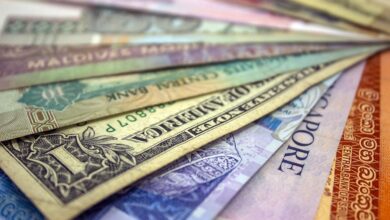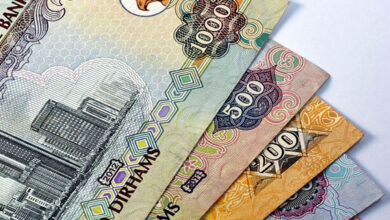The dollar follows Treasury rates higher, while the yen flirts with the critical 150 level.

Singapore The yen dropped to a new 32-year low on Thursday, keeping markets on high alert for any indications of an intervention, as Treasury rates surged to multi-year highs.
The soaring dollar also caused the Chinese offshore yuan to drop to a record low and sent the Australian and New Zealand dollars plummeting.
After increasing by almost 1% overnight, the U.S. dollar index was up 0.08% to 113.07 against a basket of currencies.
Ray Attrill, head of FX strategy at National Australia Bank (OTC:NABZY), said, “You still can’t write off the U.S. dollar, and I’m still not convinced that we’ve definitely seen the highs for this cycle” (NAB).
The Japanese yen hit a fresh trough of 149.96 per dollar, its lowest since August 1990, when it last purchased 149.92.
It has been on a losing skid for 11 straight sessions as of Wednesday’s close, and has renewed 32-year lows for six sessions already.
“Looks like it’s the rabbit caught in the headlights at the moment,” said NAB’s Attrill.
“Given that Treasury rates have gone solidly above 4%, were it not for the threat of intervention, then I think the dollar/yen would already be trading north of 150.”
The benchmark U.S. 10-year Treasury yield surged to 4.154%, its highest level since mid-2008, while two-year Treasury yields struck a 15-year high of 4.582%. [US/]
Last month, Japan intervened in the foreign exchange market to buy yen for the first time since 1998, in an attempt to shore up the battered currency.
Similarly, the offshore yuan plummeted to a record low on Thursday. It bottomed at 7.2794 per dollar, the lowest level since such data initially became available in 2011, and last traded at 7.2615.
“Higher U.S. bond yields, sell-offs in Chinese markets, concerns over a stricter stance on income redistribution in China, and rumours regarding talks on the joint manufacturing of weapons between the U.S. and Taiwan weighed on the yuan,” said Charu Chanana, market strategist at Saxo Markets.
The U.S. government is examining a plan to jointly build weapons with Taiwan, a business lobby said on Wednesday, an endeavour aimed at speeding up arms shipments to boost Taiwan’s deterrence against China.
Meanwhile, sterling slipped 0.2% to $1.1201, even as statistics released on Wednesday revealed that the greatest surge in food costs since 1980 pushed British inflation back into double digits last month.
The inflation data continues a rocky week for the pound, as Jeremy Hunt earlier this week overturned Prime Minister Liz Truss’s economic strategy and pared back her large energy subsidies.
Britain’s interior minister departed on Wednesday with a broadside at Liz Truss before her lawmakers openly quarrelled in parliament, illustrating the decline of the prime minister’s power after just weeks in the position.
The euro was down 0.1% to $0.9762.
Meanwhile, the kiwi sank 0.87% to $0.5627, weakening following a small surge earlier this week. It had achieved an almost two-week high of $0.5719 on Tuesday, following the release of scorching inflation data, encouraging predictions of a more aggressive central bank rate hike.
The Australian dollar lost 0.58% to $0.6234, with Thursday’s data giving clues that Australia’s extraordinarily tight employment market might finally be relaxing.
Nonetheless, this week’s blistering inflation readings from Britain, New Zealand, and Canada point to the fact that central banks throughout the globe are far from controlling decades-high inflation, even at the risk of strangling development.
Overnight, Fed officials also continued their hawkish tone, as Federal Reserve Bank of Minneapolis President Neel Kashkari noted that U.S. job market demand is strong and underlying inflation pressures probably have not peaked yet.





